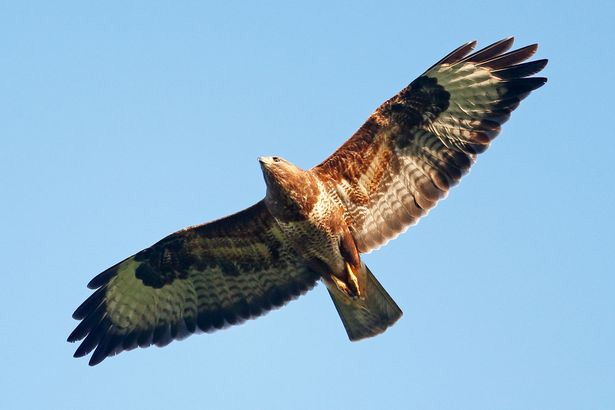SOMETIMES when nature is pushed to the brink and the outlook appears bleak, something miraculous happens.
Suddenly some imperceptible change of circumstances contrives to act in its favour. And it explodes back into life.
That’s what seems to have happened to some of our birds of prey. Yes, Ireland has lost many, including all our glorious eagles, which we shot. In Belfast a few smaller species managed to cling on like shipwrecked survivors holding on to a life raft.
Sparrowhawks that nested in the wooded crevices of our hills still occasionally went on raids in city gardens. And the kestrel would still hover above our motorway grass verges hunting for small mammals. But they too were under relentless pressure. Kestrels got all but wiped out when we poisoned our rodents. The tiny falcon disappeared from the city about a decade ago, another victim or people’s careless self-interest.
But they didn’t vanish entirely, they just became reclusive and retreated to the hidden recesses of the hillsides. And on the quarry faces that still scar our mountains from Carnmoney to White Mountain, they bred.
Last year, one even bred on an old forgotten quarry face just off the Antrim Road. Dúlra was able to sit in the car and watch the young leave the nest.
For the past decade, to see a kestrel, pocaire gaoithe in Irish, you had to visit the hills. If you looked out from the summit of Black Mountain, you’d inevitably see one and from above, its incredible russet back would often be lit up gloriously by the sun.
The breeding kestrels must have hit a critical mass – and then decided to once more colonise the city. On a trip across Belfast on Monday, Dúlra saw three hovering kestrels: one on the M2, another at Kennedy Way and a third in Andersonstown.
As for sparrowhawks, reports arrive on Dúlra’s desk every week of them being spotted by readers, usually finishing off a pigeon in their garden. Last week, a reader in Turf Lodge videoed one doing just that.
And there’s one other raptor that has, literally, taken off in Belfast in recent years. We may not have eagles soaring over the city any more, but the giant buzzard has taken its place. Almost unknown here a decade ago, they’ve made Belfast their home.
Usually they’re so high in the sky that we don’t notice them – unless we’re sunbathing. This summer, when Dúlra decided to take five and lie in the garden or on a mountain field, he inevitably saw one gliding in the thermals.
Where kestrels needed isolated quarries to build up their numbers, buzzards need tall trees to nest in. And not being particularly upset by the presence of people, they’ve taken to nesting in our parks and especially the city golf courses.
Of course, all this progress by three stunning birds of prey has taken place without our help. You wonder what would happen if we actually, as a city, decided to actively promote these birds, tracking their numbers, ensuring they weren’t poisoned and providing nest sites to help them spread. And even develop a strategy to bring eagles back to their native Belfast Hills.
Now that would be truly miraculous.
• A reader in Glengormley got a fantastic visitor to her garden this week – a badger. It was captured on her security camera and it was the first time she had ever seen one here.
Dúlra recommended she get some peanuts for her new guest as badgers adore nuts. And now it’s returning every night, or at least it’s been there four nights in a row this week.
There have been various reports that badgers are becoming as common as urban foxes due to the good weather which makes it harder for them to dig for worms in the parched earth, so they have to travel further and, just like foxes, are increasingly raiding people’s bins. Dúlra’s got his own theory about the Glengormley badger: new houses are being built on fields in the Hightown area and there’s a good chance the badgers have found themselves evicted.
Their setts can be hundreds of years old, 1,000 feet long, have up to 40 openings and hold around 15 animals. Setts are protected under law, but badgers are often forced to flee. Just one word of warning to the Glengormley family who are loving their new visitor. You’ll never again see the cute hedgehogs that up to now also visited. Because when the badgers finish those peanuts, they’ll gobble up the hedgehogs as well!









